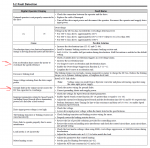ptonsparky
Tom
- Occupation
- EC - retired
This might have been better placed in engineering.
P1000.
Fault occurs at initial start and ramp Attempt. It ran fine two weeks ago.
Chatted with an excellent support person that pointed to a motor issue. Quick check with Fluke tester showed windings grounded. If it beeps there is no reason to get out the Megger.
Why over voltage vs a ground fault?
P1000.
Fault occurs at initial start and ramp Attempt. It ran fine two weeks ago.
Chatted with an excellent support person that pointed to a motor issue. Quick check with Fluke tester showed windings grounded. If it beeps there is no reason to get out the Megger.
Why over voltage vs a ground fault?


